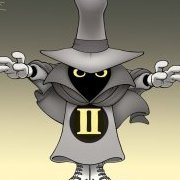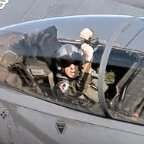
G.R.Morrison
Members-
Content Count
215 -
Joined
-
Last visited
About G.R.Morrison
-
Rank
Tenax Sniffer (Open a window!)

Profile Information
-
Gender
Male
-
Location
sub-Arctic, NH, U.S.A.
Recent Profile Visitors
6,782 profile views
-
Junkers JU-87 Stuka, Pilots viewing window on bottom of fuselage
G.R.Morrison replied to Steven H. McLain's topic in Props
Here you go. GRM -
The Luftwaffe had been using a pale blue underside color, RLM 65, on its fighters (and continued its use on most other types), but for the Mediterranean skies switched to RLM 78, the deeper shade you mention. The sandy-brown shade was RLM 79. There's likely a color-equivalency chart (or discussion) for various paint producers if you fish on 'the interwebs.' Here's WNr.10639 after its restoration following its last crash. 'Cleaner than a real one.'
-
Here's a reply from 'another' board: Hasegawa ('The King of New-Decal Reissues'') provided TWO sets of '6's in their no.09499, so perhaps someone here might have a spare pair? WNr.10639 (Skz: "PG+OJ") of the 8./JG 77 was Ofw. 'Ede' Isken's regular plane, borrowed by Ltn. Heinz Lüdemann, who was wounded in it 7.Nov. 1942, landing at Sidi Barrani. It was reported "destroyed by own forces" on 8.November in the subsequent retreat (it wasn't, of course -- just abandoned), and captured by the British on 11.November. Isken liked "6", having flown "weiße 6" with the 7./JG 77 (both
-
FW 190 A-8 / Actual nose color / Willi Unger / Red 17
G.R.Morrison replied to vonjhn68's topic in Props
As you suspected, this was a more-conventionally painted machine, "gelbe 17", the cowling was never red. Jerry Crandall attempted to get Trimaster to 'fix' their box art, but, no luck, and it's been around ever since. The curved sweep atop the cowling was a misinterpretation of a shadow from a propeller blade. The 'Krebs' rear-firing rocket tube was a short-lived device, and was unpopular because it eliminated the use of the ETC rack with its range-extending 300 liter drop tank. The photos of "gelbe 17" were taken 20.May 1944 at Barth. Unger posed for multiple shots in a 'finis -
Lovely depiction of WNr.2278. This one crashed 29.Sept. 1942 near Fl.Pl. Ljuban, Uffz. Erwin Pflaum, wounded. The I/JG 51 was the first Ostfront unit to be equipped with the new Fw 190A. GRM
-
Hedman's "92" was 15337 (RAF serial AK466), given the Chinese Air Force serial P-8101. It was the last plane assembled in Rangoon. He (and Reed) also flew "79", 15521 (RAF serial AK569), given Chinese Air Force serial P-8135. The P-40Es were assigned numbers above 100. Olynyk states five of Hedman's six claims were made in P-40Cs (on 23. & 25.Dec. 1941). A 'half' of an "observation plane" on 20.April 1942 was in a "P-40" but whether this was a C or an E isn't specified. GRM
-
Sorry for the delay in replying, I rarely log on, and am only just now reading your inquiry. I do not know if this one has been covered in 1/32 as a separate sheet, but Hasegawa did decals (although incomplete, omitting to include the I/JG 52 emblem on the port cowling) in their re-boxings, #09303 in 1/48, and in 1/32, #08135). Erich Hartmann arrived at the front in October 1942, when the 7./JG 52 was still equipped with Bf 109G-2s. He flew a variety of these. Beginning in mid-March 1943 he flew Bf 109G-4s, his most-used machine being his "weiße 2" (WNr.14997, with the Stammkenn
-
Whether some of the early Series II Mk.IV (bomber) Mossies were delivered with Dark Earth / Dark Green uppers has been discussed on (Mosquito) boards in the past. F/Lt Peter Rowland (flying DZ313, "GB*E") remembering the Oslo raid of 25.Sept 1942, described S/L George Parry's Mossie (DK296, "GB*G") on the outward-bound leg, just above the waves (to evade the German radar, and thereby the feared Fw 190s): "What a beautiful little aircraft this is, I thought, looking to my right at the trim silhouette of the leading Mosquito, its carpentered lines, slender, its tail cockily high, the big Rolls
-
Your topic aircraft was WNr.5344, which Wick used throughout his various postings in 1940, as "gelbe 2" with 3./JG 2 (where the cowl emblem originates, the Staffelkapitän Hennig Strumpel's wife was Swedish, so he chose blue & yellow for the pennant), briefly with 6./JG 2, then 'Doppelwinkel' while Gruppenkommandeur with the I/JG 2 "Richthofen" (which is the one in the Tamiya kit), and finally, as Kommodore of the JG 2 (this is the iteration in the Sundin drawing that Cool Hand included. Note the overpainted Doppelwinkel). Wick, the highest-scoring pilot of the Battle of Britain period, w
-
Spectre711 wrote: "I don't know if this color plate is fictional or not but I like it." I admire Mr. Bastek's artwork, but I find his WW-I subjects to be more-accurate than this Bf 109G-6/AS. It's 'sort-of' accurate, but Anders Hjortsberg has a better-rendered example, based on a photo of a real example, "weiße 1" of the 9./JG 1. Note the correct depiction of the JG 1 emblem (PORTSIDE ONLY!), yellow beneath the cowl, the spiral spinner in the correct orientation for this one (and the majority of others, though not all), and black III Gruppe vertical bar unoutlined. He
-
Uwe, You're welcome. Happy to help when I can. The Luftwaffe's maintenance facilities in North Afrika were minimal. Aircraft needing significant work or inspection were sent to Greece or Italy, the ULTRA radio intercepts have many instances of a unit being advised that the following listed airframes were now ready to be retrieved. WNr.8673 was an older machine, perhaps 'remanufactured' in Germany. The whitewall tire of the tail wheel was common, it was an indicator that this tire had copper filaments, to enable static electricity discharge. The white (paint) on
-
As you will likely read on the Life Like decal instructions (they do a good job with their research, and also usually mention external references/sources), his 'last' 109F-4/Trop (used in September 1942), WNr.8673 of the 3./JG 27, is the one to go with the Kübelwagen. The vehicle continued in use after Marseille's fatal mission, being photographed in Tunisia with pilots of the II/JG 77 (BA photo 101l-421-2075-24, and others). I cannot comment on the seat, although this was an older, refurbished machine. Note that while the fuselage cross is of the later '109G' style, without
-
This was asked here, some 'leven' years ago: Looks like both your choices had the earlier (non-staggered) waist positions. Good luck in your build, GRM
-
There's a color photo, 11 o'clock angle, of Dengler's "504" on the hangar deck, loaded. Twin fuel tanks, seven bombs (three on each - folded - wing, a larger one, perhaps 1000 lbs, on the centerline). I wasn't able to attach it (only very-small images possible), but if you send me a PM with your email I'll forward it. GRM
-
The emblem to which you refer was that of the JG 4, and if choosing a black number, your machine would have belonged to the 6.(Sturm)/JG 4. Kagero includes this emblem in their no.15035 "FW 190s Over Europe, Part 1" decal/booklet, where it is used on Michalski's WNr.960542. It seems the background color on the shield varied, as quite-recent 'aircraft archaeology' in the Czech Republic has unearthed a FW 190A-8 cowl piece (in remarkably good condition) that clearly shows the background of the emblem in red (which is logical for the second Staffel in a Gruppe, in this cas



